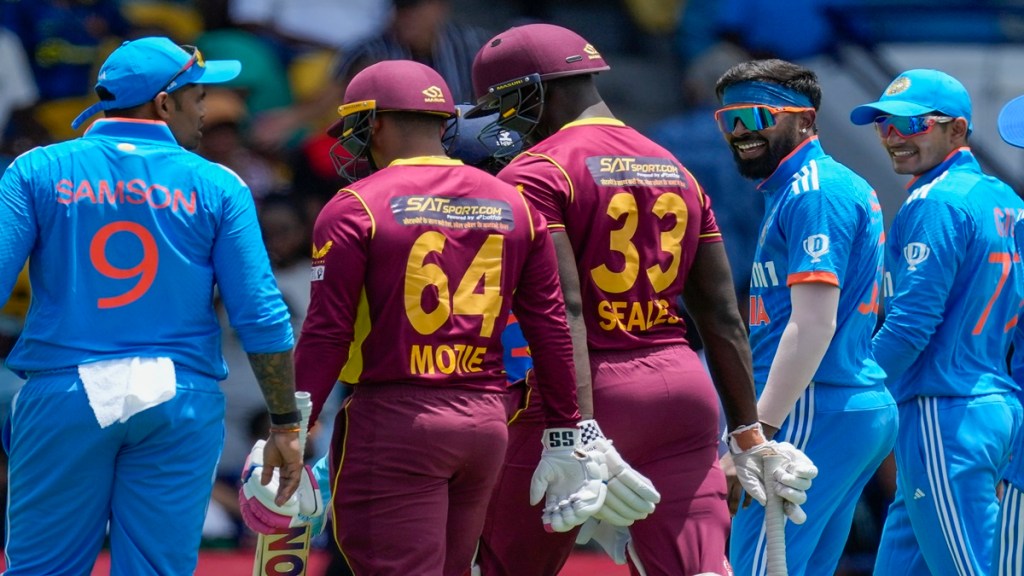By Tushar Bhaduri
Alick Athanaze and Kirk McKenzie made their debuts in the recent Test series against India and were considered promising prospects for the West Indies, but one look at the corresponding debutants for the visitors – Yashasvi Jaiswal and Mukesh Kumar – throws light on the disparity between the two teams and the reasons for the decline in Caribbean cricket.
Scores of 47 and 32 may not be too significant in themselves, but given the slim returns from most of the other batsmen, Athanaze and McKenzie were two of the positive takeaways for the hosts. In contrast, Jaiswal’s maiden innings in Test cricket brought 171, followed by scores of 57 and 38. Mukesh isn’t one of the more well-known players on the Indian domestic circuit, but the manner in which he acquitted himself gave one the impression that he knew his job and how he needed to go about it.
For all the hype surrounding the Indian Premier League (IPL), it’s the domestic first-class structure – highlighted by the Ranji Trophy – that prepares players for the step up. The hard grind and punishing schedule toughen them to such an extent that if and when the call for national duty arrives, they are as ready as they can be, and the difference in level doesn’t come as a big surprise.
Jaiswal caught the eye of the casual cricket fan with his exploits in the IPL over the last couple of seasons, but he also averaged over 80 in 15 first-class games before his Test debut. Mukesh had close to 150 wickets at an average in the low 20s before making his debut in Trinidad, and his control and nous were better than what most West Indian bowlers managed. Jasprit Bumrah and Mohammed Shami were absent, and one wonders what damage they could have inflicted on such a fragile batting line-up.
None of the West Indies players on show in the two Tests had a first-class batting average in the 40s, let alone higher. On the Indian side, Ruturaj Gaikwad made it to the squad with a first-class batting average of around 42, and there was some speculation over whether he had done enough to deserve his spot, while someone like Sarfaraz Khan has not got a look-in despite being Bradmanesque in his appetite for runs.
When one looks at some of the players that have played for the West Indies in recent times, the lack of quality options hits home. Jermaine Blackwood has an average of just over 30 after playing 56 Tests, while Raymon Reifer has been tried at various positions – he has been in and out of the side since his debut in 2017 – but still averages below 23.
Test skipper Kraigg Brathwaite is considered one of their rocks in the format, but the 30-year-old presents underwhelming figures despite playing 87 Tests. A return of 12 centuries and a batting average under 35 wouldn’t have allowed such a long rope in many other teams. It shows that domestic cricket in the Caribbean isn’t adequately preparing players for the next level.
Jason Holder is considered a premier all-rounder, but his returns have tapered off in recent times. The current pace attack can’t hold a candle to the great fast-bowling batteries in decades gone by. Alzarri Joseph is said to be a top prospect, but at 26 years of age and with 85 wickets in 30 Tests, he needs to translate potential into consistent performances pretty soon.
That the best West Indian bowler in the two Tests against India was left-arm spinner Jomel Warrican, no world-beater himself, reflects the plight of Caribbean cricket.
Terminal decline?
To put matters in perspective, Test cricket is one format where Caribbean fortunes were said to be on a slight upswing over the last couple of years. Their plight in white-ball cricket is evident with the failure to make it to the 50-over World Cup in India later this year and not getting to the main rounds of the last global T20 event in Australia.
The likes of the Netherlands, Zimbabwe, Ireland, and Scotland have focused almost exclusively on white-ball cricket, and have matched or even overtaken the West Indies in ODI and T20 cricket. West Indies don’t always get to field their strongest team, due to administrative and financial reasons or just with key players failing to live up to potential, but that is more or less the case with several other national boards.
There was a time not too long ago when the West Indian players were the most sought-after individuals for every franchise-based league, but lately, that’s not been the case either.
After the limited-overs series against India, the Caribbean will look forlornly at what they have missed when the top 10 teams will fight it out in the 50-over World Cup in India in October-November. They may use the time to prepare for their next assignment in the World Test Championship cycle, a daunting tour of Australia early next year.
South Africa have already given precedence to their domestic T20 competition over their international commitments. Some other teams are struggling either to attract fans or put a competitive team on the park. The West Indies were the predominant side in the game during the 1970s and 80s. It would be a shame if they fade away from the international game, leaving it even more depleted.

